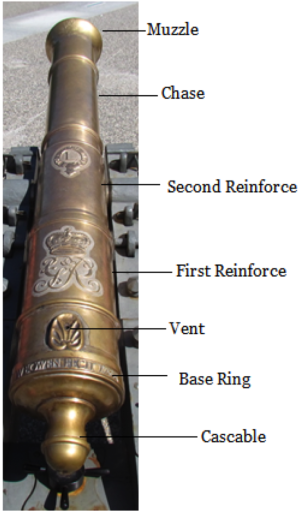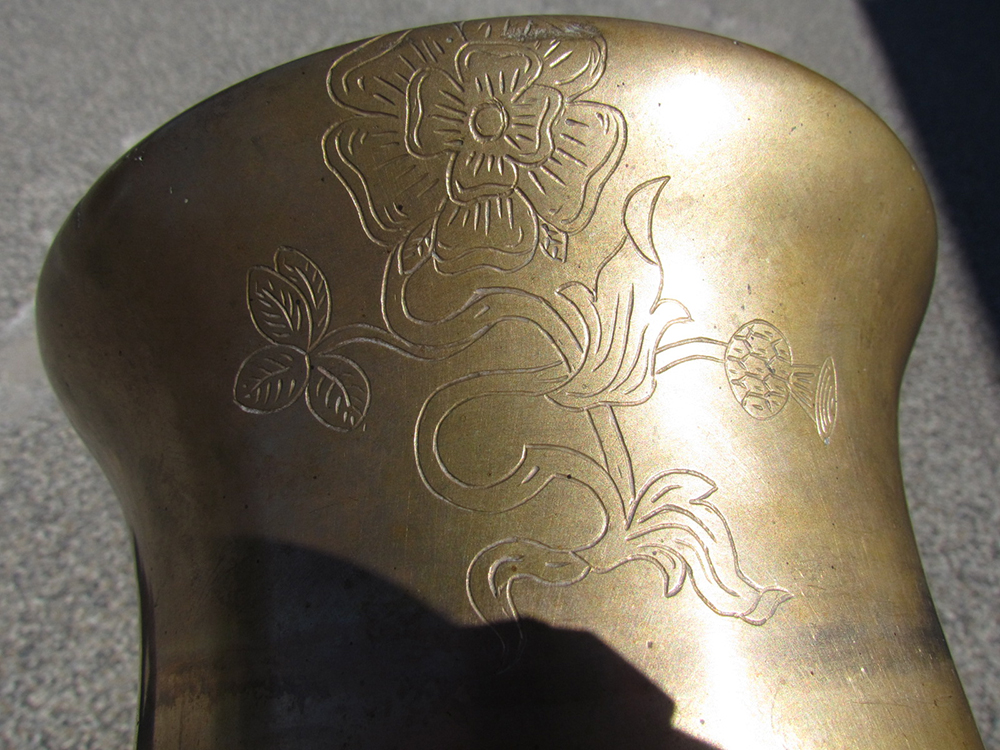When looking at the Fort Pitt Museum’s reproduction Light British Six Pounder cannon or at the original barrels displayed in the Clash of Empires exhibition on the fifth floor of the Heinz History Center, the ornate detailing on these guns is abundant. This post on the Fort Pitt gun barrel will help you better understand the guns the next time you visit the museum in Point State Park.

Pictures on the left show the Fort Pitt’s reproduction cannon, and the photos on the right show an original cannon on display at the Heinz History Center.
Starting at the top, or muzzle of the gun, engraved in the center is a tudor rose, a symbol for England. To the right of the rose is a thistle, the symbol for Scotland, and to the left, is a shamrock, the symbol for Ireland.
On the chase of the gun is Lord Ligonier’s stamp. Lord Ligonier became the Commander in Chief of the British Army in 1757. He stepped down from that position in 1759 to become the Master General of Ordnance. This new position placed him in charge of all artillery, engineers, fortifications, transports, and hospitals in the British Army.
Surrounding the stamp in Latin is the motto for The Most Honorable Order of the Bath – Tria juncta in uno (“three joined in one”) – of which Lord Ligonier was a member. The three in one may reference the three kingdoms of England, Scotland, and Ireland or the Holy Trinity.
The right Trunion is marked No. 64. This number represents the sequence in which this barrel was cast from a pattern.
The engraved GR with a 2 in the scroll on the first reinforce represents the Latin name for King George the Second – Georgius Rex.
Cast into the base ring of the cannon is W. Bowen Fecit 1755. Fecit is Latin for “made by” and W. Bowen stands for William Bowen, an owner of a furnace in Cowden, County Kent, England.
Engraved onto the Breech Ogee, which is directly in front of the Cascable, are the numbers 4-3-24. These numbers represent the weight of the gun barrel given in hundredweights.
The first number is the amount of hundredweights, which equals 112 lbs. The second number given is the amount in quarter hundredweights, which is 28 lbs. And the last number is just the simple pounds.
Breaking it down using the 4-3-24 marked on the cannon:
4 x 112 lbs. = 448 lbs.
3 x 28 lbs. = 84 lbs.
+ 24 lbs.
= 556 lbs., which is the weight of the gun barrel.
Visit the Fort Pitt Museum on Saturday, Aug. 8 to learn more about 18th century artillery and see the museum’s reproduction cannon fire at 12, 2, and 4 p.m. All cannon firings are weather dependent.
Justin Meinert is the living history program coordinator at the Fort Pitt Museum.














